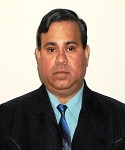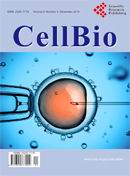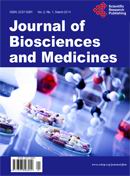
Biography

Rajiv Dutta
Sharda University, India
Discovery of Electro and Mechano-sensitive Membrane Nanopores Essential for Cellular Elongation
Abstract:
It was found that elevated cytosolic calcium is essential for pollen tube growth and the rate of
growth is oscillatory between 0.1 and 0.4 μm.sec-1. It was also seen that the oscillatory growth
proceeds with the elevated cytosolic calcium and reduced hydrogen concentrations and the growth
seize with the addition of gadolinium chloride. It was earlier reported gadolinium chloride blocks the
stretched activated ion channels in certain bacteria. We were working on the mechanism for
polarized cell growth phenomenon, these informations made me to hypothesize the presence of
some kind of machano-sensitive ion channels of nanoscale size at the growing pollen tube tip,
which allows the calcium influx in the cytosol. Thus, I have decided to carry out the patch clamp and
electrophysiological studies on the growing pollen tube tip membrane as well as pollen grain
membrane to search the different kind of nanopores responsible for influx of calcium ions and their
location on growing tube, and their mechanism of their action and specificity. The laser micro
surgery technique was used to make a whole on cell wall at the tip region 2-5 μm from the tip) to
access the tip membrane at the growing region.
It was found that at the growing pollen tube tip only consists mechano-sensitive voltage dependent
channel with conductance 30 pS, which is specialized to transport calcium ion from outside to
cytosol, whereas on pollen grain spontaneous and machano-sensitive calcium (conductance 15 pS)
and potassium channels (conductance 33 pS) were found, respectively. The mechano-sensitive
channels were found to be activated when the tip membrane were subjected to 5 to 10 kilo Pascal
external pressure. There was no difference in channel activity when the excised patches were
subjected to negative or positive pressure stimulations. The electrophysiological studies shows
that the rate of calcium influx may be determined with membrane pressure, in natural condition
possibly this pressure may have been provided either or collectively by cyto-skeletons,
sarcoplasmic reticulum and other proteins etc. The activity of these mechano-sensitive channels
were seized with the addition of much diluted gadolinium chloride solution in the experimental bath.
With the help of microscopic video through confocal microscopy, it was found that the vesicles with
diameter of approximately 1 μm size are only allowed to reach near the tip and fuse (exocytosis)
with tip membrane to provide the membranous material to the growing pollen tube tip. The patch
clamp studies were also carried out on isolated cytosolic membranous vesicles of 1 μm size form
dissected growing pollen tube. These vesicles were fused before patch clamp analysis, because
these vesicles much small to be patched. Only machno-sensitive calcium channel were identified in
the vesicles membrane. These channels also seize their activities in presence of gadolinium
chloride. This confirms the presence of mechano-sensitive calcium channels in the tip membrane
Biography:
Prof. Dr. Rajiv Dutta earned M.Tech. in Biotechnology and Engineering from The Department of Chemical Engineering of IIT, Kharagpur, Ph.D. in Bioelectronics from BITS, Pilani and D.Sc. from IUCM, Colombo, Sri Lanka. Presently Prof. Dutta is Professor in Bioengineering and QNS Chair Professor in Nanobiotechnology at the School of Engineering, Sharda University, Greater Noida. Earlier to this he was Professor and Director, Institute of Bio-Science & Technology, SRMU, Barabanki, India,. He has taught Biochemical Engineering and Biophysics to B.E., M.E. and M.Sc. level students at Universities in India and abroad. He was also Faculty at the Department of Botany at Oklahoma State University, Stillwater, OK and Department of Biological Sciences at Purdue University, West Lafayette, IN apart of teaching to Ph.D. students; he carried out advanced research in the area of Ion channels electrophysiology and Membrane Nanopore. He is a Fellow of American Academy of Science & Technology (FAAST) and Elected member of New York Academy of Science, the National Acadmey of Sciences, India (NASI) and American Society for Research. He is an International member for The International Organization of Scientific Research (IOSR). He also holds the position of President of Biosensor Academy and Scientific Advisor to Serra BioLife Ltd., Melbourne, Australia. He had received various awards including JCI Outstanding Ten Young Person of India and ISBEM Dr. Ramesh Gulrajani Memorial Award 2006 and Outstanding Researcher Award-2011 at Ion Channel Retreat, Vancouver, Canada. He is Editorial Board Member of several journals including American Journal of Plant Physiology, American Journal of Science & Technology, International Journal of Engineering, Asian Journal of Biotechnology, International Journal of Advanced Research in Science and Technology (IJARST) etc.
He has published 40 publications in highly cited journals and three patents to his credits. He has been invited to deliver talks and chair various sessions at several International scientific events. Prof. Dutta has visited several countries that include USA, UK, Germany, France, Japan, Italy, The Netherlands, Hungry, Thailand, Malaysia, Singapore, Argentina, Canada, China and Sri Lanka.



